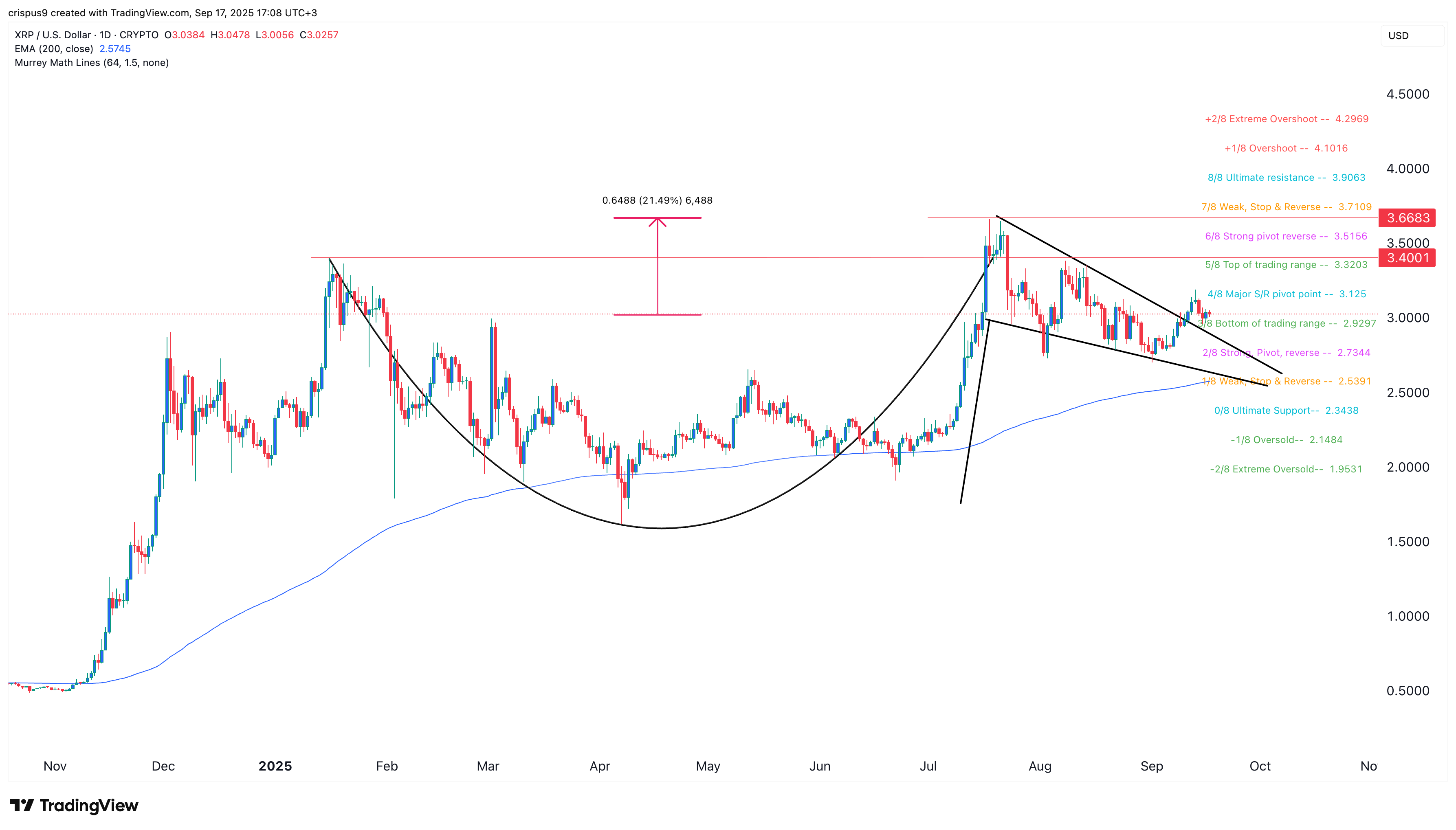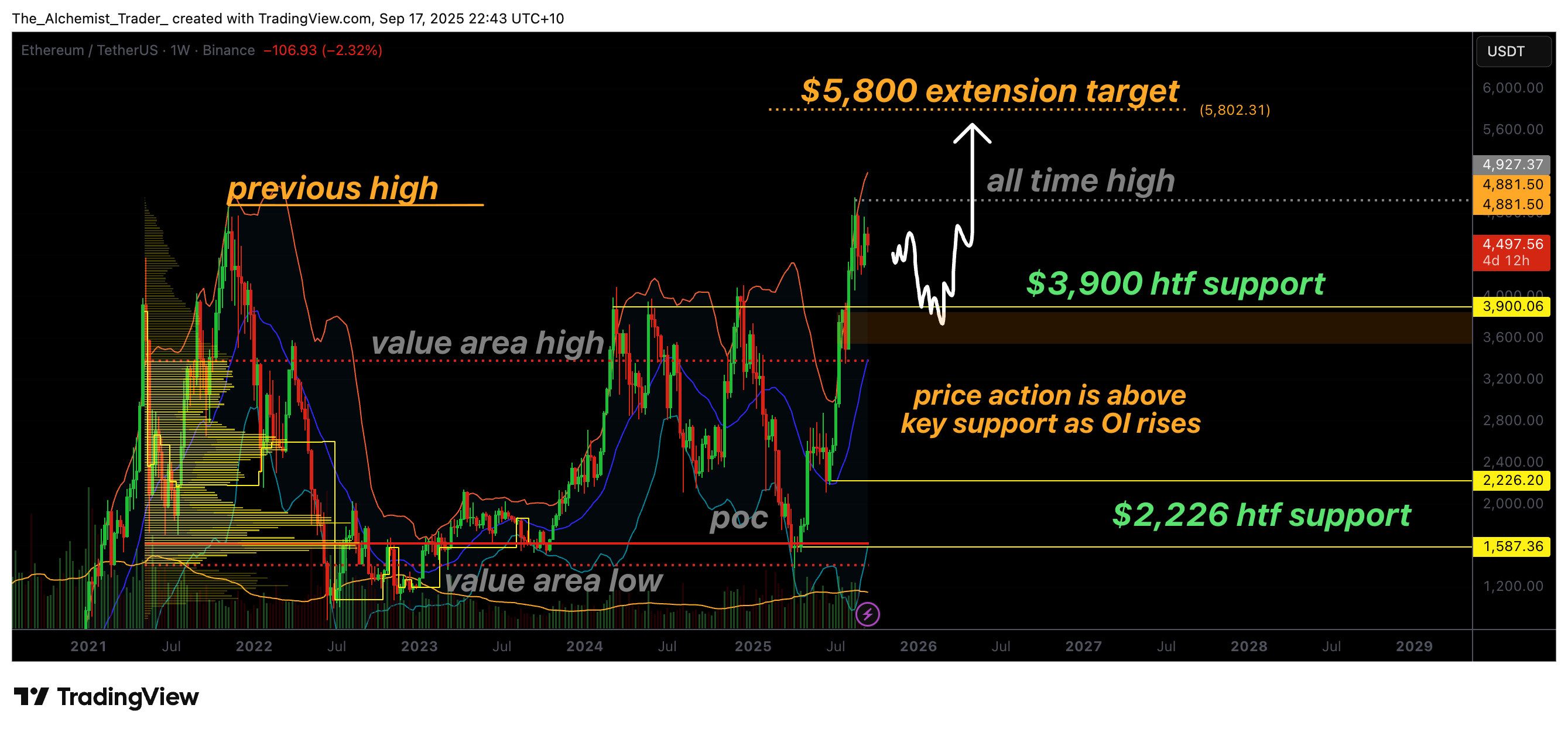Pi Coin crashes nearly 80% — is Pi Network collapsing under its own weight?
Can Pi Network recover user trust as Pi Coin free-falls 78% just weeks after launch, with more token unlocks and delays on the horizon?
From top 10 to tumbling
In February, Pi Network (PI) burst onto the scene with the kind of hype most cryptocurrencies only dream of. The long-awaited mainnet launch of Pi Network finally happened, and within days, the token was riding high, reaching an all-time high of $2.98 on Feb. 26.
For a brief moment, it even cracked the list of top 10 cryptocurrencies by market cap, rubbing shoulders with the industry’s giants. However, fast-forward to Apr. 2, and the picture looks far less glamorous.
As of this writing, Pi Coin is trading at just $0.66, a steep 78% drop from its peak just over a month ago. The crash has wiped out around $14.5 billion in market value, dragging its capitalization down from nearly $20 billion to just $4.56 billion.
The picture gets even murkier when we zoom out. Over 124 million Pi tokens are set to be unlocked this month alone, according to PiScan. And this is just the beginning.
Monthly unlocks will keep climbing, peaking at 233 million in July. Altogether, more than 1.53 billion new tokens will hit the market over the next year, pushing total circulating supply to 8.2 billion.
That’s a massive jump for a network that already sits at 6.7 billion in supply and is aiming for a maximum cap of 100 billion. At this pace, Pi is quickly earning a reputation as one of the most inflationary digital assets out there.
Meanwhile, exchange support remains uneven. OKX was the first major platform to list Pi, followed by Bitget, Gate.io, and MEXC, with Gate.io currently leading in trading volume.
But the token still hasn’t made it to most tier-1 exchanges. Binance, Coinbase, Kraken, and Bybit have all stayed away. In fact, Bybit’s CEO went as far as calling Pi a “scam,” a label its developers strongly deny.
So, what’s really happening behind the scenes of Pi Network? And with more tokens set to flood the market, what can investors expect in the coming weeks and months? Let’s break it down.
Glitches, delays, and dead ends
Behind Pi Coin’s steep price drop lies a web of internal frictions — issues that have less to do with market sentiment and more to do with operational breakdowns and silence from the people steering the ship.
One of the biggest frustrations is a single choke point: KYC. Know Your Customer verification, the standard process used to confirm user identity, has become a nightmare for Pi Network’s vast user base.
This step is mandatory. Without it, users can’t migrate their mined Pi tokens to the mainnet, which means no transactions, no withdrawals, and essentially no access to the value they believe they’ve earned.
Reports indicate that despite the Open Network launch on Feb. 20, and the extended KYC and migration grace period till Mar. 14, the Pi Core Team has struggled to process the backlog for its estimated 60 million-plus users.
The switch from third-party provider Yoti to a proprietary KYC system was meant to improve scalability, but technical glitches, such as “Tentative Approval” statuses that stall progress, have left many users in limbo.
Some estimates suggest that only around 14 million users have successfully migrated, highlighting a severe capacity issue.
Social media platforms, especially X, are filled with firsthand accounts of Pi users grappling with this broken experience.
One user shared how her Pi coins were initially marked as migrated, then unexpectedly returned without any explanation, leaving her stuck in a loop of reconfirmations and waiting.
Another reported losing 1,427 Pi tokens simply because his migration didn’t complete before the grace period expired, despite being in the queue the whole time.
Stories like these have fueled anger and anxiety, especially among those who spent years mining the token with the hope of eventual access. What’s intensifying the backlash is the silence. The Pi Core Team, often referred to as PCT, has kept its cards too close to its chest.
There’s been little transparency on major aspects of the roadmap. Users have no clear updates on validator incentives, the state of dApp development, or even what happened with the proceeds from Pi’s .pi domain auction.
The truth may be far less dramatic, but the absence of consistent communication is allowing speculation to dominate the narrative. A user bluntly put it, “Getting to new highs from here might be really difficult.”
Activity tells a different story
Pi Network’s latest attempt to demonstrate real-world use came through PiFest, a global merchant initiative held from Mar. 14 to Mar. 21. Framed as a campaign to drive everyday adoption, the event aimed to show how Pi could be used in practical settings, whether for groceries, clothing, car repairs, or digital services.
On paper, the reported numbers seemed impressive. More than 125,000 merchants registered, including 58,000 active sellers, and around 1.8 million Pioneers participated. But behind the scale, actual network activity told a different story.
On-chain data indicates that payment volume showed little change during the event. As one user noted on X, “The number of payments during the current #PiFest has not increased significantly,” suggesting that many users were hesitant to spend their tokens or preferred to hold onto them while uncertainty around Pi’s future remains.
This hesitation reflects deeper cracks in the ecosystem. Pi had previously committed to building a broad base of decentralized apps to keep users engaged beyond mining and peer-to-peer transfers.
However, third-party reviews show that only a small number of dApps are currently operational, and those that exist lack meaningful utility when compared to platforms like Ethereum (ETH) or Solana (SOL). Without a strong application layer, there is limited motivation for daily token usage.
One of Pi’s headline strategies was its planned integration with Telegram’s crypto wallet. Initially positioned as a move to expand reach, the effort has not yet resulted in meaningful engagement or visible outcomes.
Meanwhile, concerns around privacy are also beginning to surface. Pi’s KYC system uses a community-driven process in which users verify others using selfie videos and ID checks.
While this approach was intended to scale access, it carries risks. If redactions fail, personal information could be exposed, which has become a growing concern among users.
Taken together, Pi’s ecosystem still feels like a work in progress. Until the platform aligns real incentives for merchants, improves user confidence, and delivers functional apps, mainstream adoption will likely remain out of reach regardless of how many users are technically onboarded.
A make-or-break moment
Pi Network is entering what many in the crypto space describe as a critical utility phase. This is the point where hype alone is no longer enough to sustain value, and factors like real-world usage, developer activity, and ecosystem strength begin to determine whether a project will endure or fade away.
History offers plenty of cautionary tales. Projects that failed to move beyond this stage, such as BitConnect, OneCoin, and even more credible names like NEM and Verge, eventually collapsed due to a mix of lofty promises and underwhelming delivery.
The cycle tends to repeat itself. It starts with early user excitement and rapid valuation growth, followed by delays in execution, and ends in growing skepticism and loss of confidence.
For investors, the months ahead will be key. Focus on what is happening on-chain. Track how many wallets are actually migrating, keep an eye on token unlock schedules, and avoid reading too much into price movement without context.
Unless Pi can show signs of genuine user activity, better token management, and a more mature ecosystem, any short-term rally is unlikely to hold. As always, approach the market with caution and never invest more than you can afford to lose.




